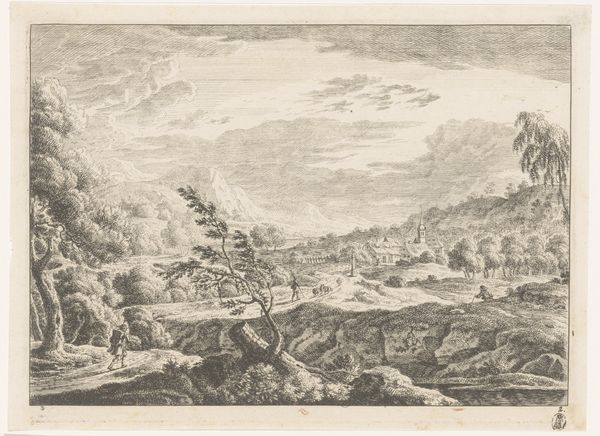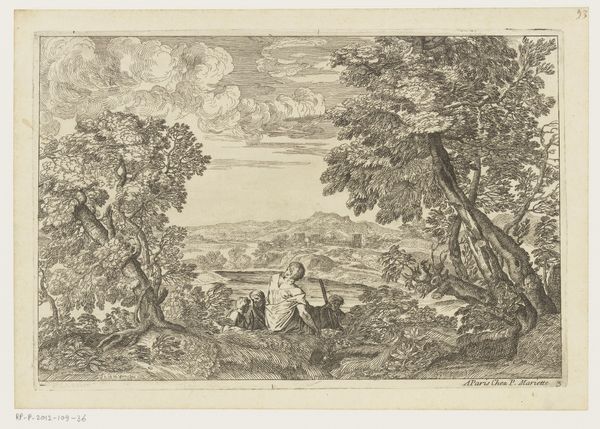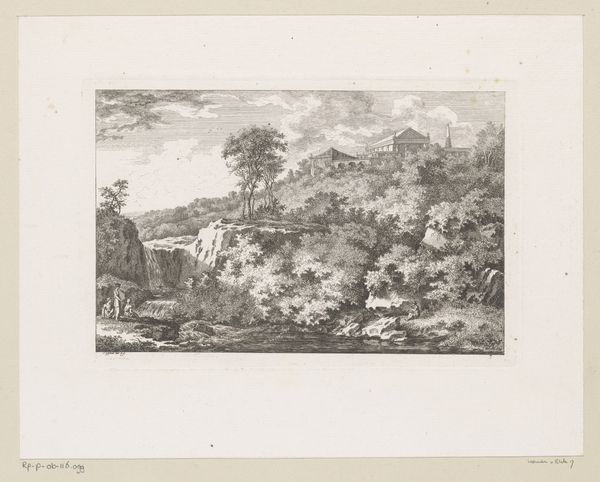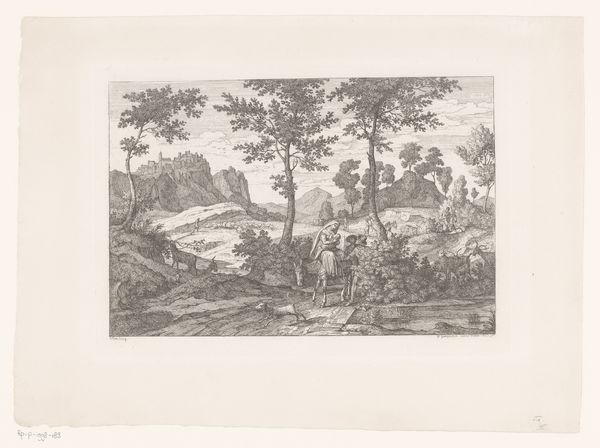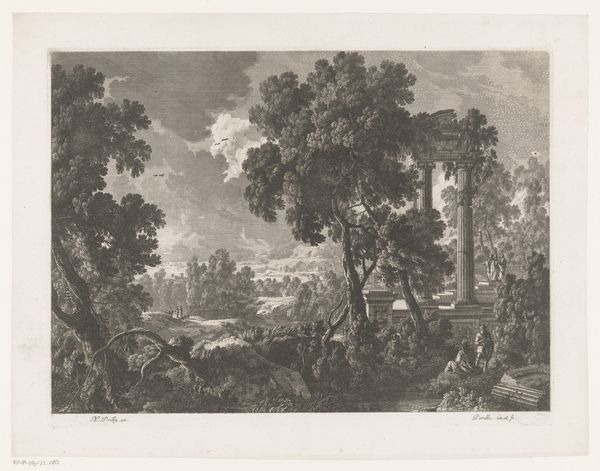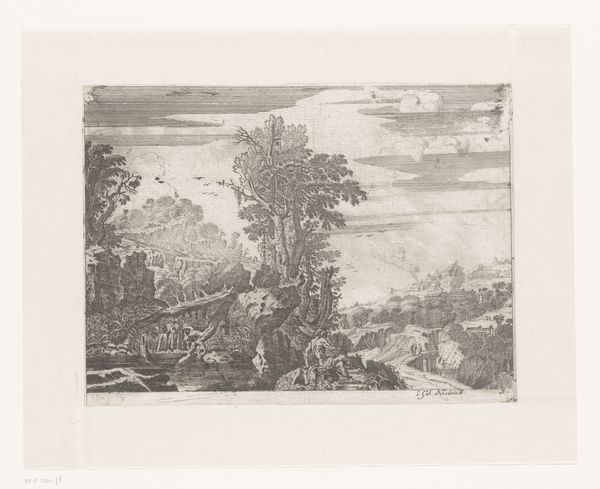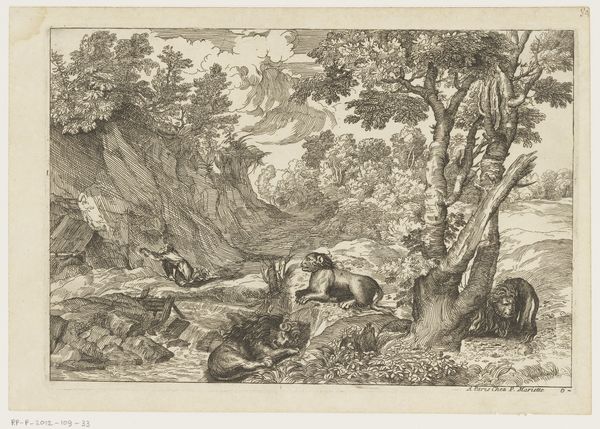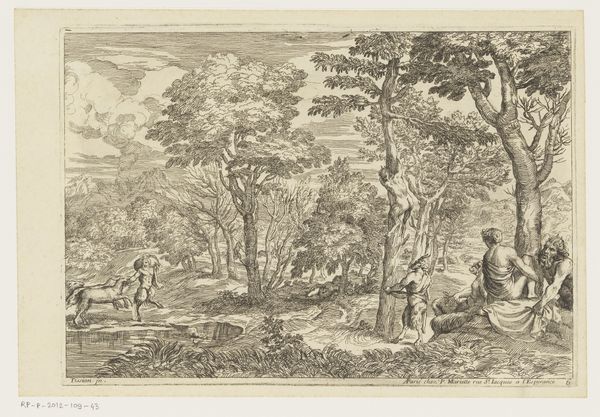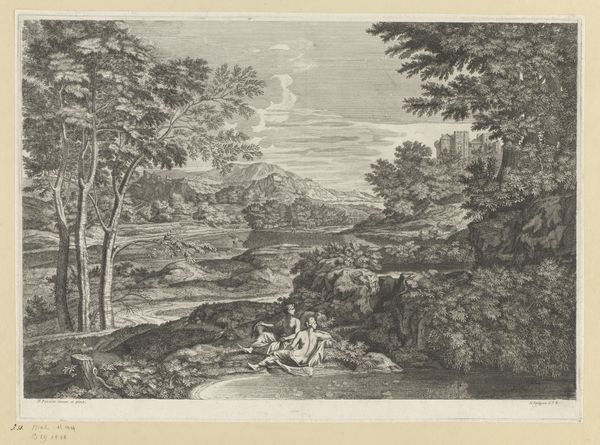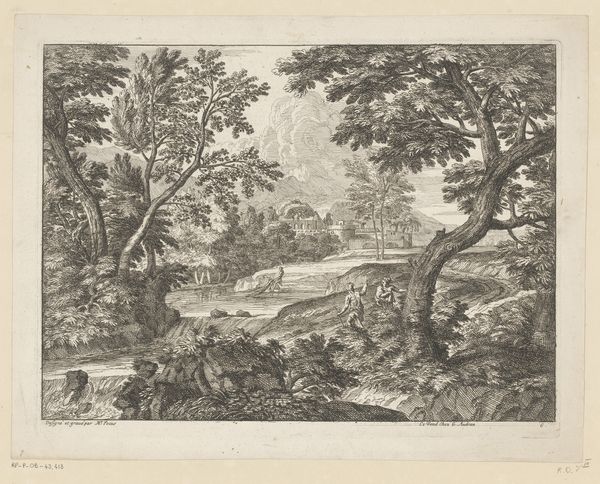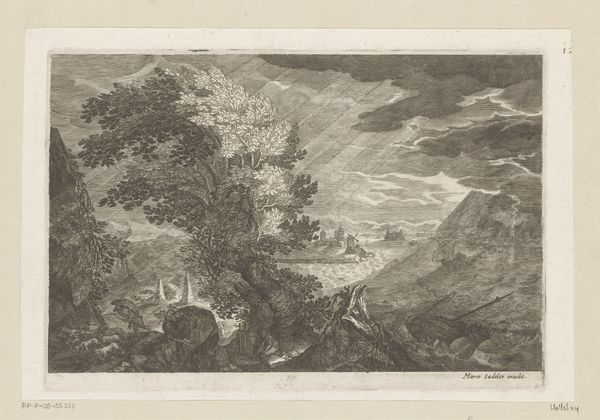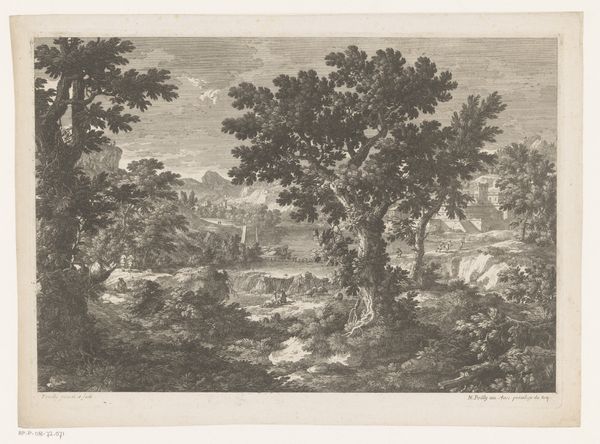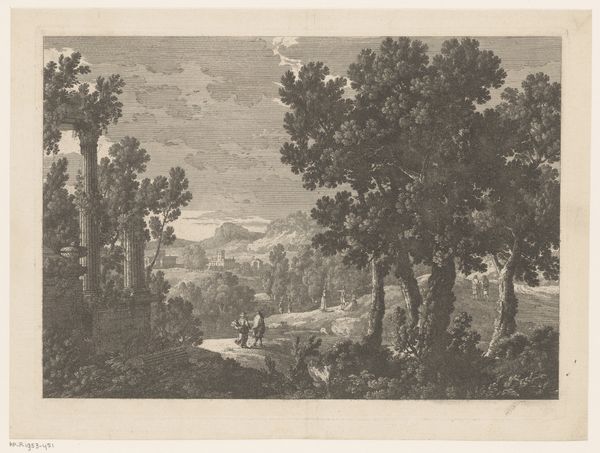
Landschap met een man en vrouw onder een boom gezeten en een staande man op een pad 1651 - 1708
0:00
0:00
print, engraving
#
baroque
# print
#
old engraving style
#
landscape
#
form
#
line
#
genre-painting
#
engraving
#
realism
Dimensions: height 254 mm, width 348 mm
Copyright: Rijks Museum: Open Domain
Editor: Here we have "Landschap met een man en vrouw onder een boom gezeten en een staande man op een pad," which translates to "Landscape with a man and woman seated under a tree and a standing man on a path," an engraving that was created sometime between 1651 and 1708. The use of line is incredible, yet its detailed clarity has a somewhat detached feel. What strikes you most about this piece? Curator: It’s fascinating how this print presents an idealized vision of the Dutch Golden Age countryside. We see genre-painting merging with Baroque landscape traditions. It is rendered accessible to a burgeoning middle class that sought depictions reflecting their aspirational values through idealized rural scenes that emphasize notions of tranquility and order. How does that public context alter our experience? Editor: I see that order now, the balance between light and shadow and the arrangement of the figures...it's less natural, and more posed, more symbolic, right? Curator: Exactly. Engravings like this were reproduced and disseminated widely. Think about the role that such imagery plays in constructing national identity and influencing perceptions of an idealized past. It creates, defines, and markets what could be a common cultural desire for harmony with the land. Who benefits from this romantic vision of pastoral life? Editor: Hmm…perhaps those with the leisure to enjoy and the means to acquire such idyllic representations? So the art normalizes their experience. Curator: Precisely. The very act of creating and distributing prints helped solidify and reinforce existing social structures, reflecting certain ideologies regarding land ownership, leisure, and societal roles. In looking, what are we internalizing? Editor: This definitely adds a critical dimension to my understanding – seeing it less as a simple landscape and more as a reflection of power and societal values being circulated. Curator: It shifts our perspective from aesthetic appreciation to critical analysis, demonstrating how art can both reflect and shape society. It challenges the supposed universal and neutral experience of encountering nature. Editor: I see what you mean. It's definitely made me think differently about landscape art in general. Thank you!
Comments
No comments
Be the first to comment and join the conversation on the ultimate creative platform.
